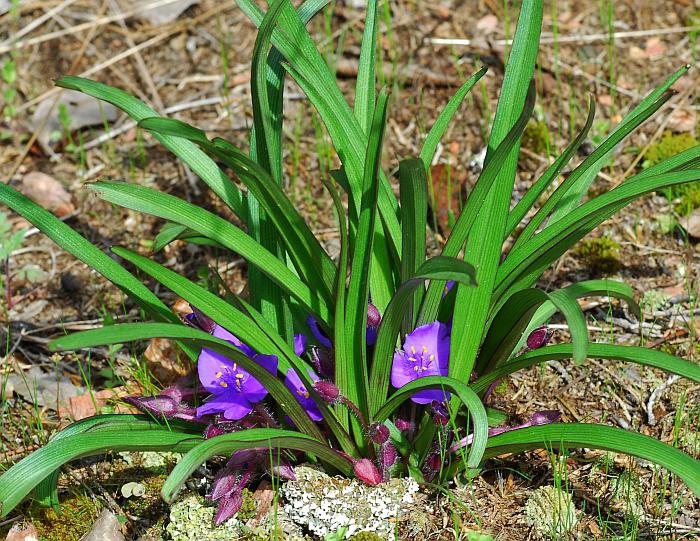Tradescantia longipes E.S. Anderson & Woodson

Native
CC = 8
CW = 5
MOC = 20
© SRTurner
Tradescantia longipes E.S. Anderson & Woodson | |
 |
Native CC = 8 CW = 5 MOC = 20 |
© SRTurner |
|
Family - Commelinaceae Habit - Perennial forb with thickened, fleshy roots. Stem - Erect, 2-10 cm long, densely long-hairy. Leaves - Basal and alternate, 14-25 cm long, linear, as broad as or narrower than the sheaths, deep green, irregularly hairy, especially toward the tips.
Inflorescences - Terminal. Flower stalks 30-60 mm long, conspicuously pubescent with a mixture of nonglandular and minutely gland-tipped hairs.
Flowers - Sepals 3, 8-10 mm long, green, often pink-or purple-tinged, herbaceous or somewhat membranous, densely pubescent with a mixture of nonglandular and minutely gland-tipped hairs, these often somewhat sticky when fresh. Petals 3, equal, 10-15 mm long, broadly obovate, bright purple or reddish pink, less commonly blue or light pink.
Fruits - Capsules 4-8 mm long, ovoid, 3-locular. Seeds 3-6 per capsule, 2-3 mm long, oblong to ovoid and somewhat flattened with a depression on 1 side, the surfaces undulate to bluntly several-ribbed. Flowering - April - May. Habitat - Rocky, upland forests in ravines and on slopes, glades, fields, on acidic substrates. Origin - Native to the U.S. Lookalikes - Broadly, other species of Tradescantia. Other info. - Missouri has no recognized endemic species, but this plant is close. It is found only in Missouri's Ozarks and in the Ouachita mountains of Arkansas. It is easily recognized by its symmetrical, 3-parted purple or pink flowers, strap-like leaves, and the virtual absence of a stem. The flowers are borne down among the leaf bases instead of above the leaves on a long stalk, as with most other species in the genus. The flower stalks and sepals are glandular. Photographs taken at Ouachita National Forest, Montgomery County, AR, 5-7-2015, southeast of Crane Lake, Iron County, MO, 4-13-2017, and at Silver Mines Recreation Area, Madison County, MO, 4-14-2025 (SRTurner). |